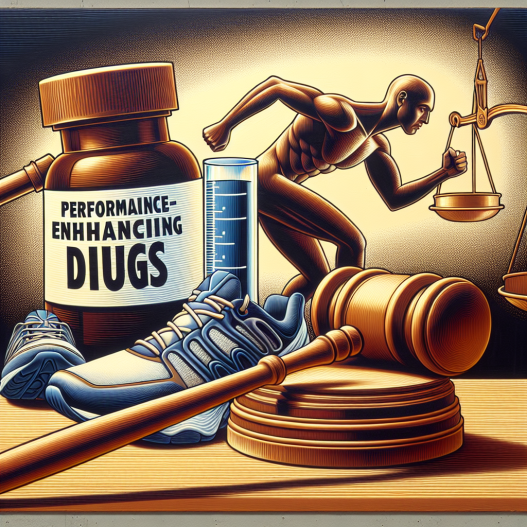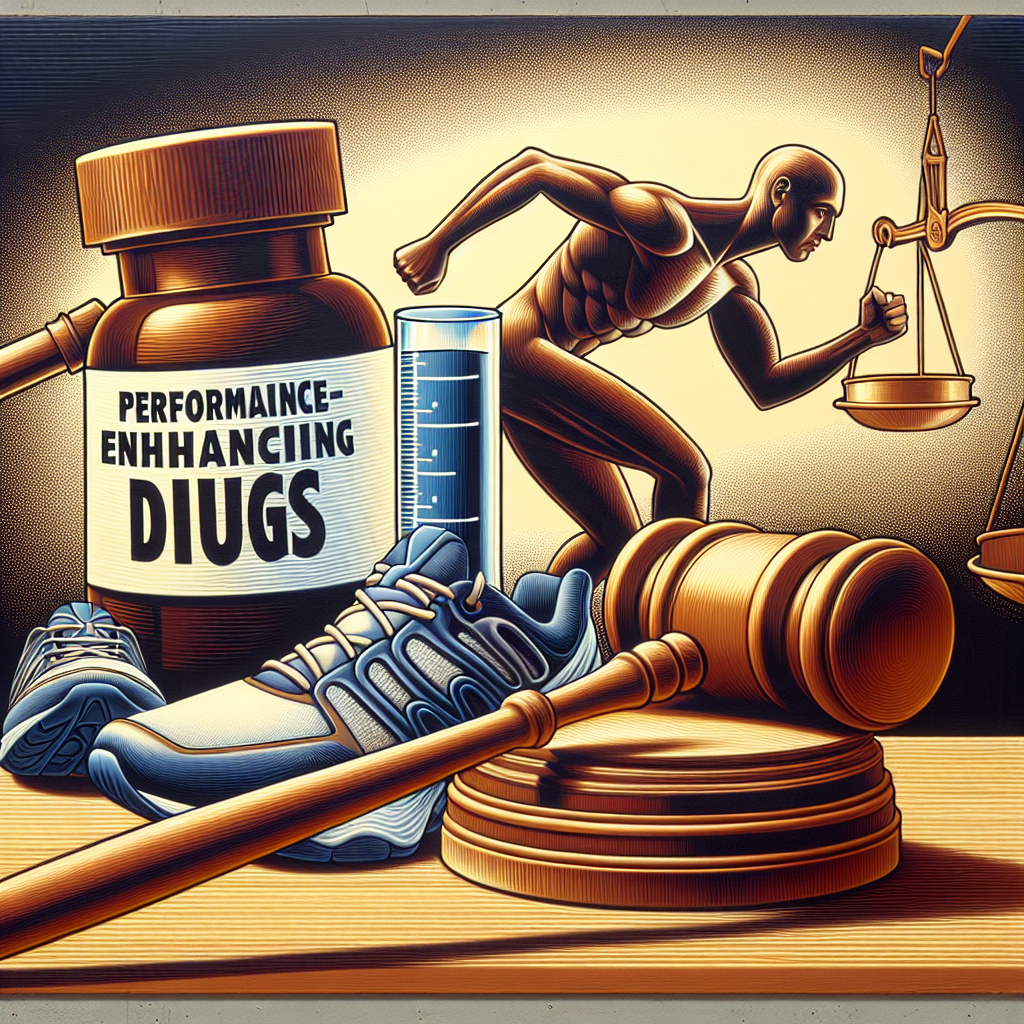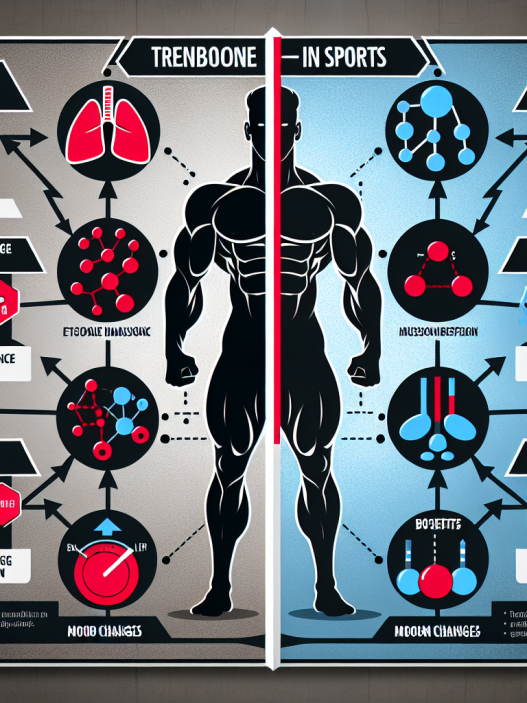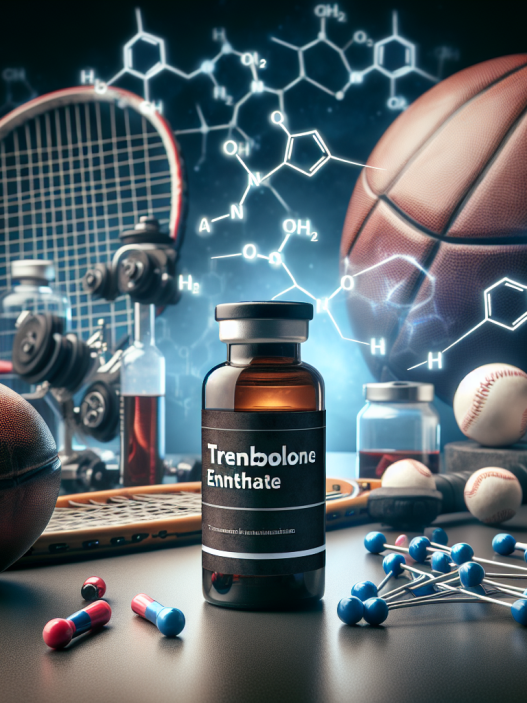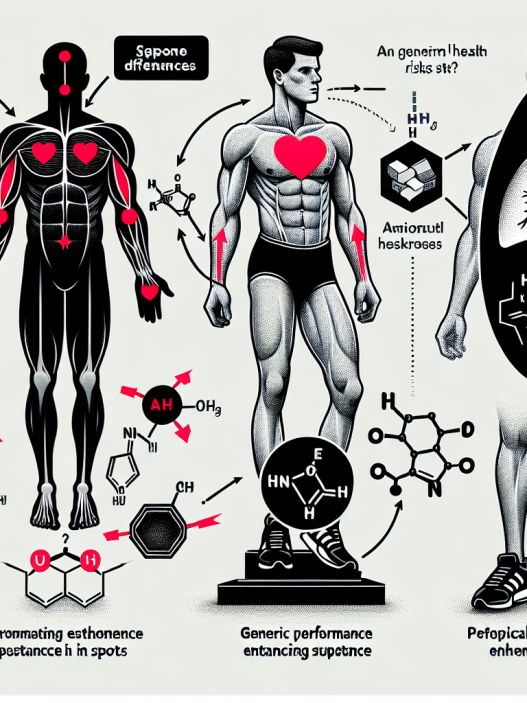-
Table of Contents
Trenbolone and Doping in Sports: Ethical and Legal Implications
Performance-enhancing drugs (PEDs) have been a controversial topic in the world of sports for decades. Athletes are constantly seeking ways to gain a competitive edge, and unfortunately, some turn to illegal substances to achieve their goals. One such substance that has gained notoriety in recent years is Trenbolone, a powerful anabolic steroid. In this article, we will explore the ethical and legal implications of Trenbolone use in sports, as well as its pharmacokinetic and pharmacodynamic properties.
The Rise of Trenbolone in Sports
Trenbolone, also known as “Tren,” is a synthetic androgenic-anabolic steroid that was originally developed for veterinary use to promote muscle growth in livestock. However, it has since become a popular choice among bodybuilders and athletes looking to increase muscle mass, strength, and performance.
One of the main reasons for Trenbolone’s popularity is its potency. It is considered to be one of the most powerful steroids on the market, with an anabolic rating of 500, five times higher than testosterone. This means that it has a significant impact on muscle growth and strength, making it an attractive option for athletes looking to improve their performance.
Another factor contributing to Trenbolone’s popularity is its ability to increase red blood cell production, leading to improved oxygenation and endurance. This can be especially beneficial for endurance athletes, such as cyclists and long-distance runners.
The Ethical Debate
The use of Trenbolone and other PEDs in sports raises ethical concerns. Many argue that it goes against the spirit of fair competition and gives an unfair advantage to those who use them. It also puts pressure on clean athletes to use these substances to keep up with their competitors.
Moreover, the use of Trenbolone and other steroids can have serious health consequences, including liver damage, cardiovascular issues, and hormonal imbalances. This raises questions about the well-being of athletes who choose to use these substances.
On the other hand, some argue that the use of PEDs is a personal choice and should not be regulated by governing bodies. They argue that as long as the substances are not harmful, athletes should have the freedom to use them to enhance their performance.
The Legal Implications
In most countries, the use and possession of Trenbolone and other anabolic steroids without a prescription is illegal. In the United States, Trenbolone is classified as a Schedule III controlled substance, meaning it has a potential for abuse and can lead to severe psychological or physical dependence.
In addition to legal consequences, athletes who test positive for Trenbolone use can face severe penalties, including disqualification, suspension, and loss of medals or titles. This not only affects the individual athlete but also their team and country’s reputation.
Pharmacokinetics and Pharmacodynamics of Trenbolone
To understand the effects of Trenbolone on the body, it is essential to examine its pharmacokinetic and pharmacodynamic properties. Trenbolone is administered via intramuscular injection and has a half-life of approximately 3-5 days. This means that it stays in the body for a relatively long time, making it easier to detect in drug tests.
Once in the body, Trenbolone binds to androgen receptors, promoting protein synthesis and increasing nitrogen retention in the muscles. This leads to an increase in muscle mass and strength. It also has anti-catabolic properties, meaning it prevents the breakdown of muscle tissue, allowing athletes to train harder and recover faster.
However, Trenbolone also has several side effects, including acne, hair loss, and increased aggression. It can also suppress natural testosterone production, leading to hormonal imbalances and potential long-term health consequences.
Real-World Examples
The use of Trenbolone in sports has been well-documented, with several high-profile cases in recent years. In 2016, Russian weightlifter Aleksey Lovchev was stripped of his Olympic silver medal after testing positive for Trenbolone. In 2019, American sprinter Christian Coleman was banned for two years after missing three drug tests, one of which was due to a misunderstanding about his whereabouts while he was out shopping for Christmas presents.
These cases highlight the serious consequences of Trenbolone use in sports and the importance of strict drug testing protocols to maintain fair competition.
Expert Opinion
According to Dr. John Hoberman, a leading expert on the use of PEDs in sports, “Trenbolone is one of the most potent and dangerous steroids on the market. Its use in sports not only goes against the principles of fair competition but also poses significant health risks to athletes.” He also emphasizes the need for stricter regulations and testing to prevent the use of Trenbolone and other PEDs in sports.
Conclusion
The use of Trenbolone and other PEDs in sports raises ethical and legal concerns and can have serious health consequences for athletes. While it may provide a temporary advantage, the long-term effects can be detrimental to an athlete’s well-being. It is crucial for governing bodies to continue implementing strict regulations and testing protocols to maintain fair competition and protect the integrity of sports.
References
1. Johnson, D. L., & Hoberman, J. (2021). The history of doping in sport. In Doping in Sport (pp. 1-20). Routledge.
2. Kicman, A. T. (2008). Pharmacology of anabolic steroids. British journal of pharmacology, 154(3), 502-521.
3. Lovchev, A. (2016). Russian weightlifter stripped of Olympic silver medal for doping. The Guardian. Retrieved from https://www.theguardian.com/sport/2016/aug/25/russian-weightlifter-stripped-of-olympic-silver-medal-for-doping
4. Coleman, C. (2019). Christian Coleman banned for two years for missing drug tests. BBC Sport. Retrieved from https://www.bbc.com/sport/athletics/54084404
5. Trenbolone. (n.d.). In Drugs.com. Retrieved from https://www.drugs.com/international/trenbolone.html







